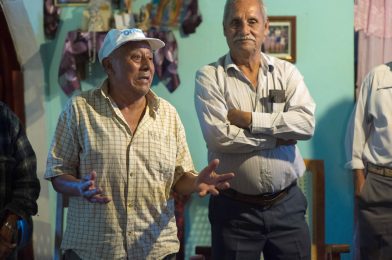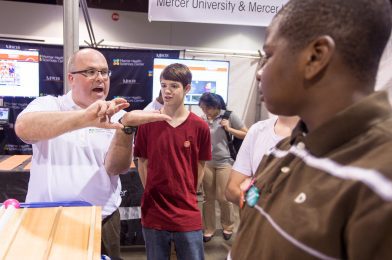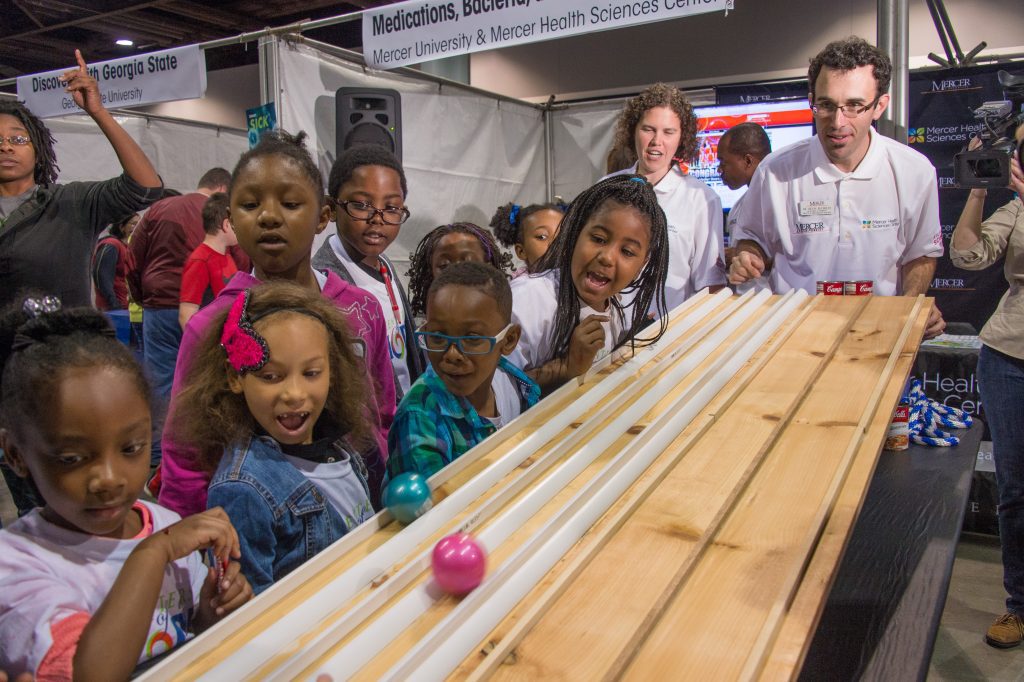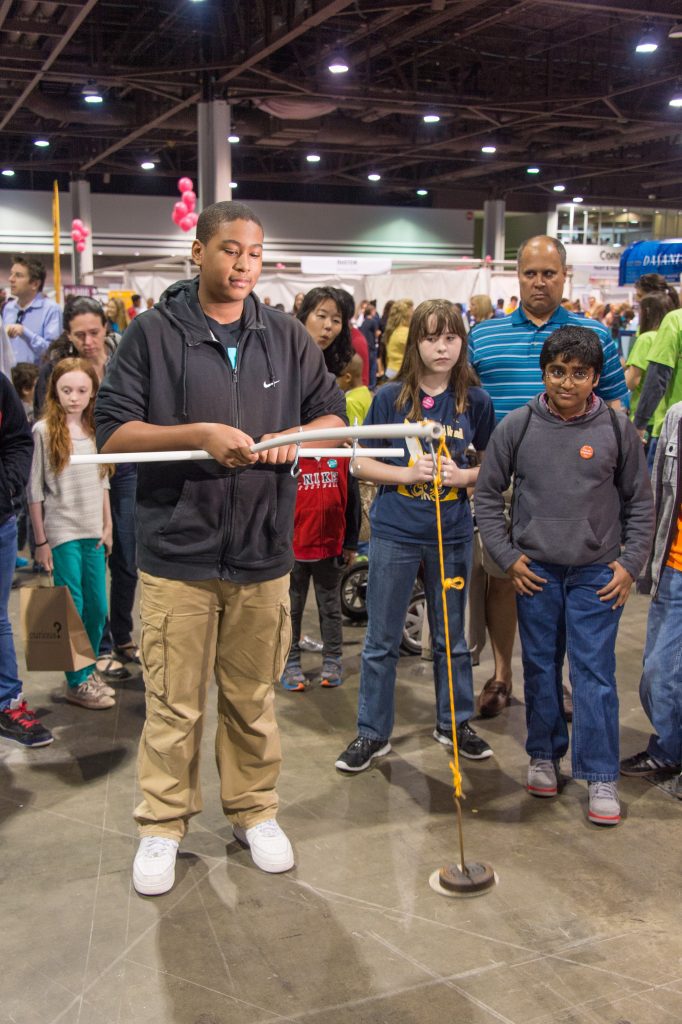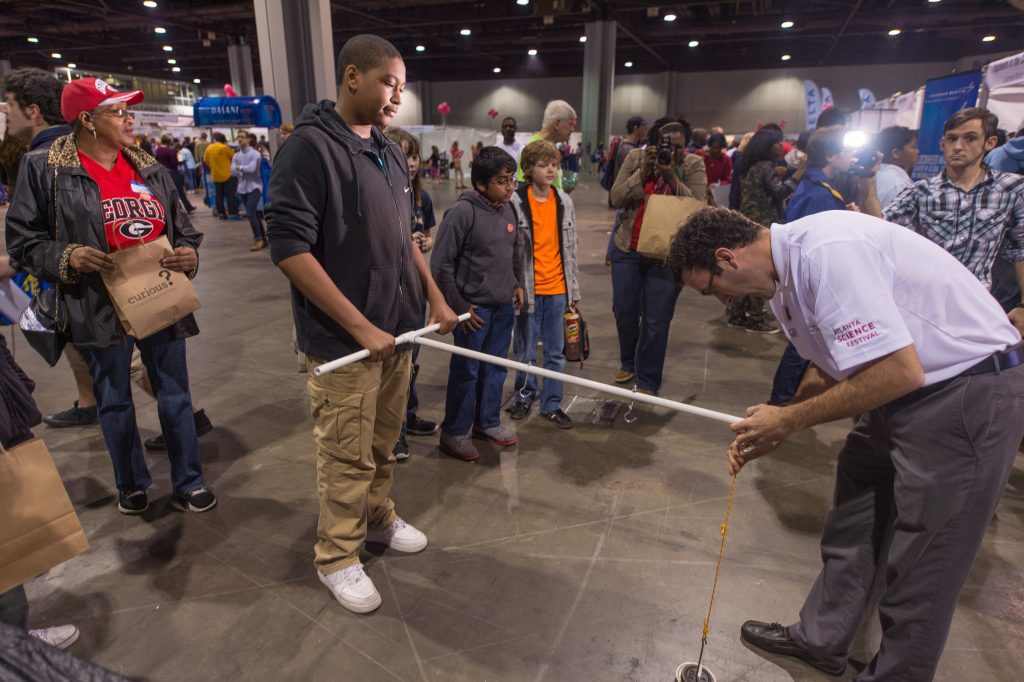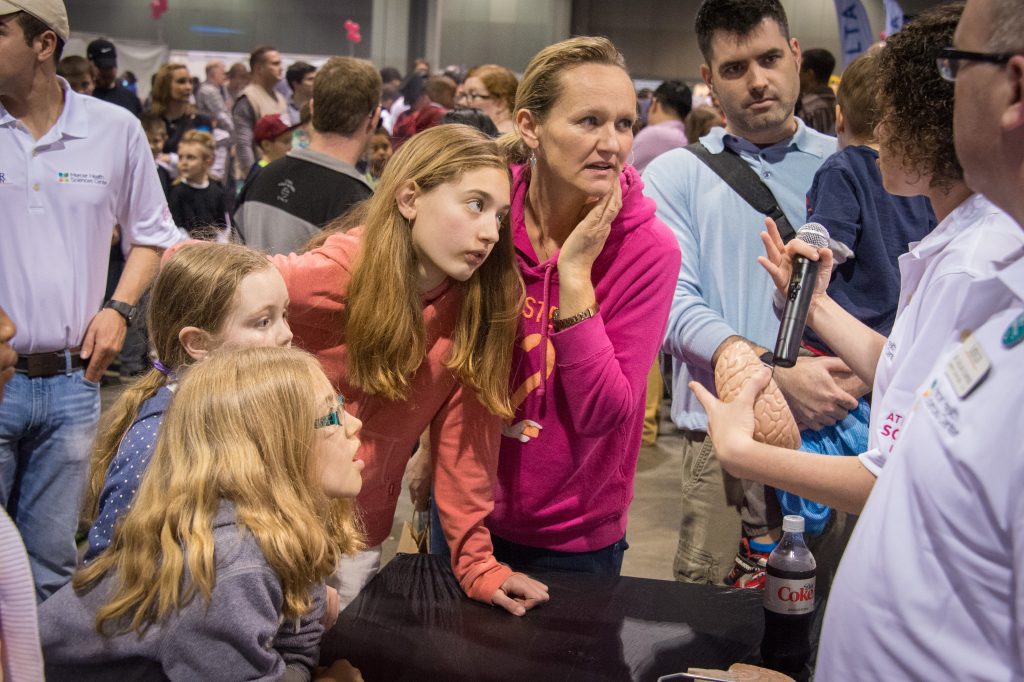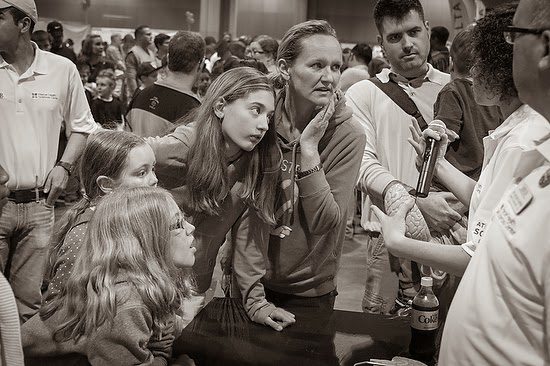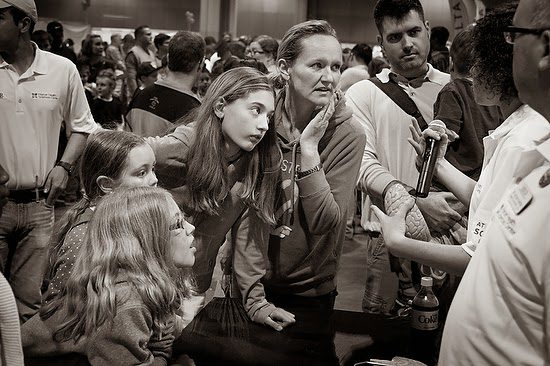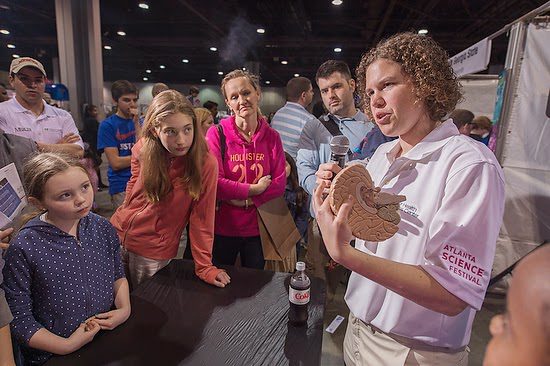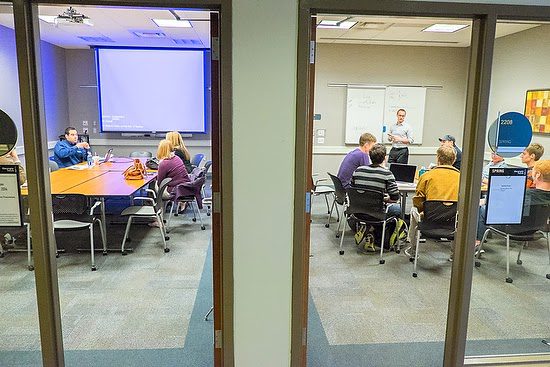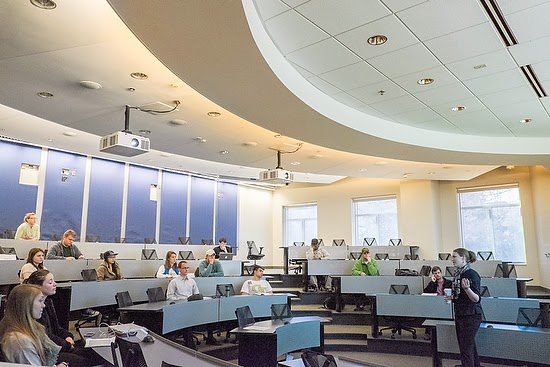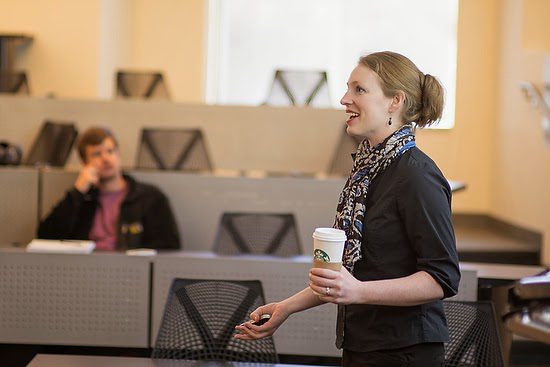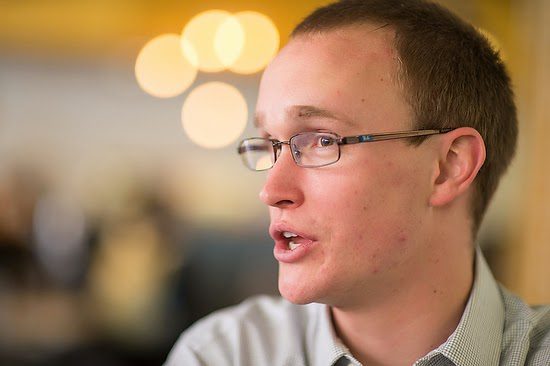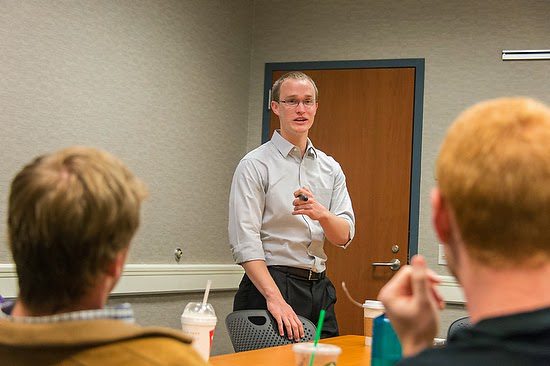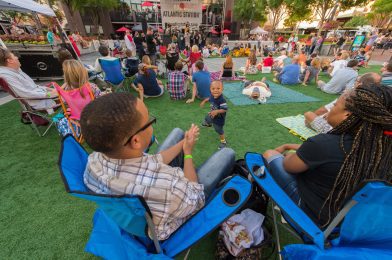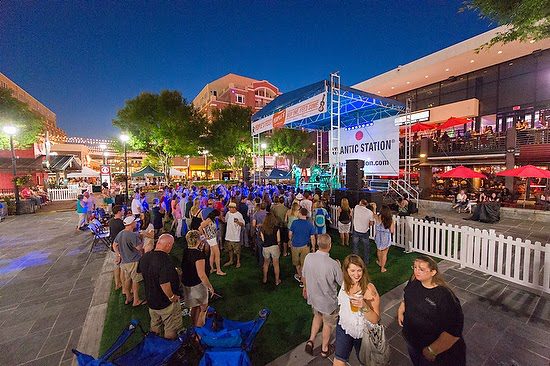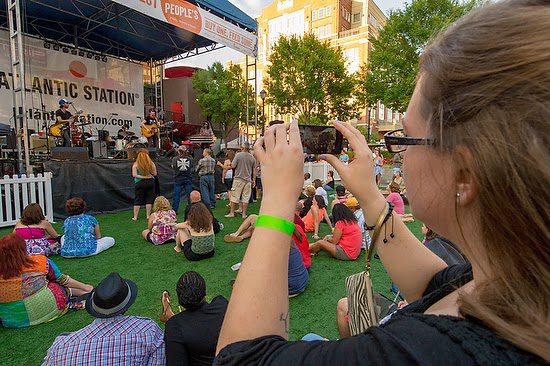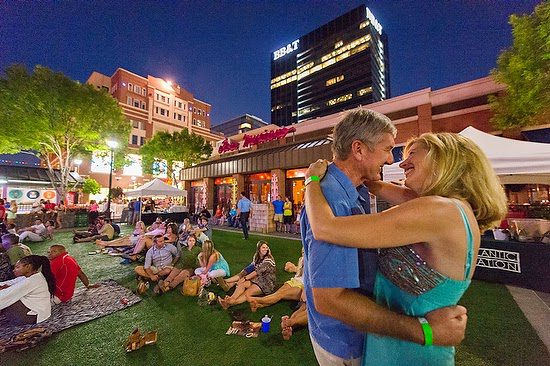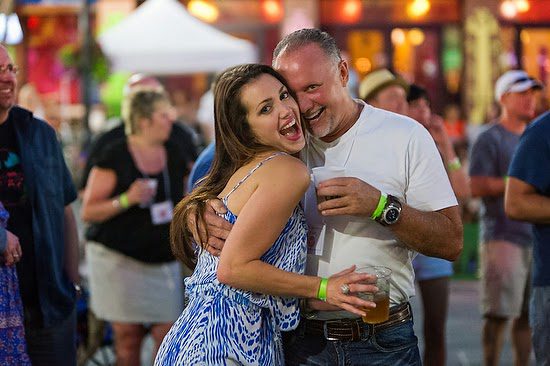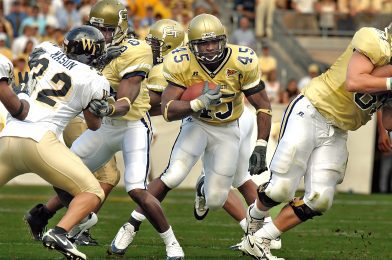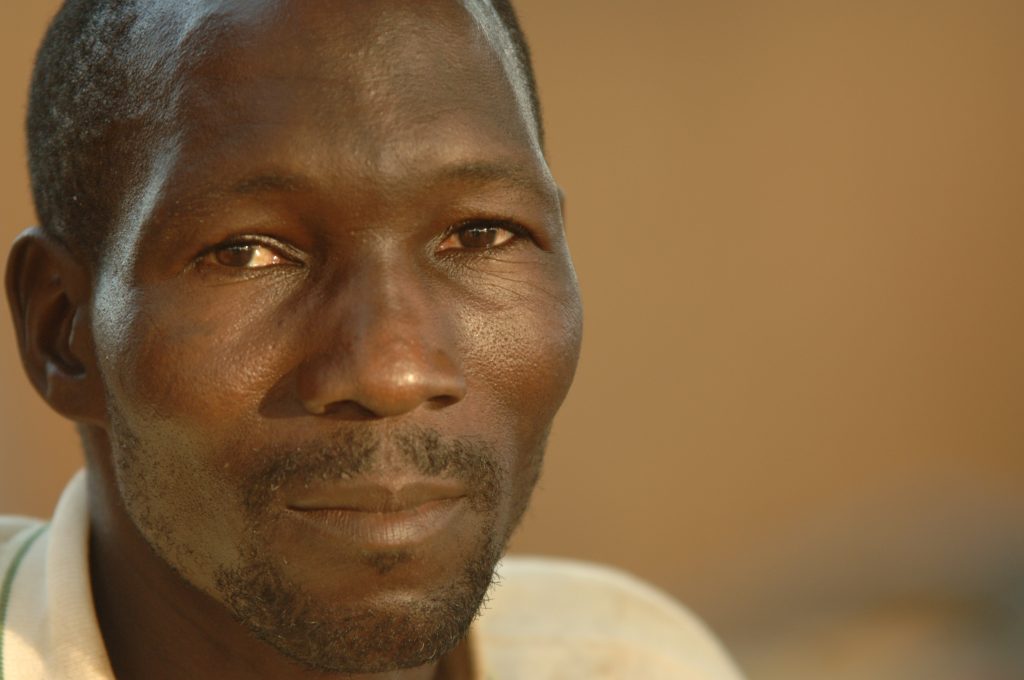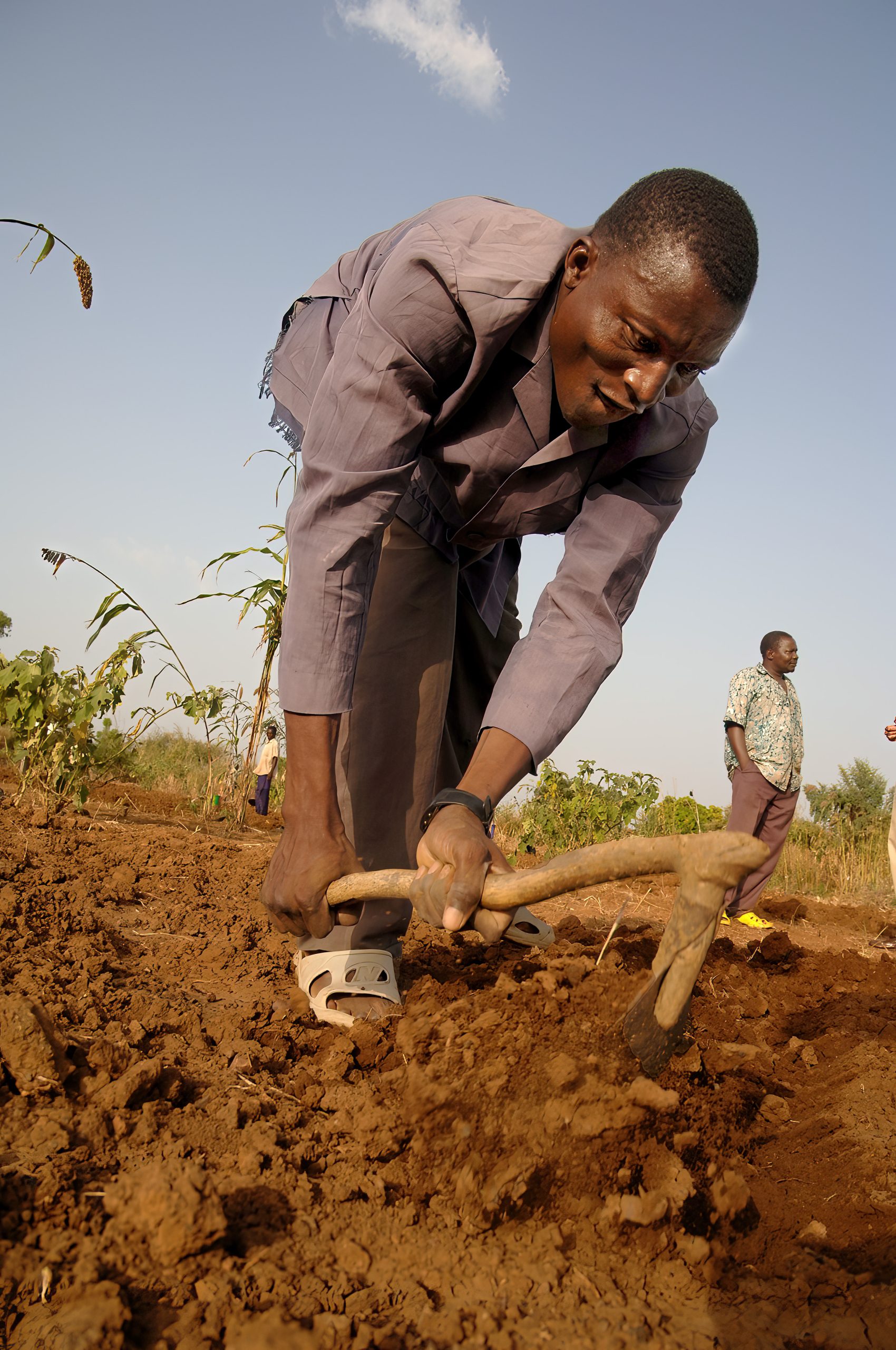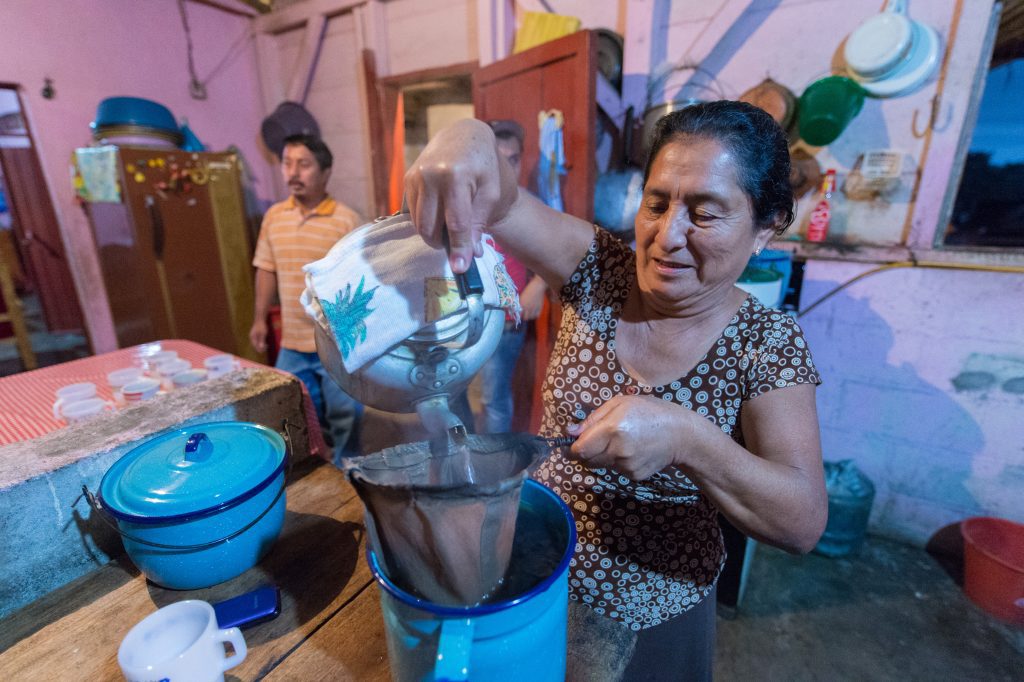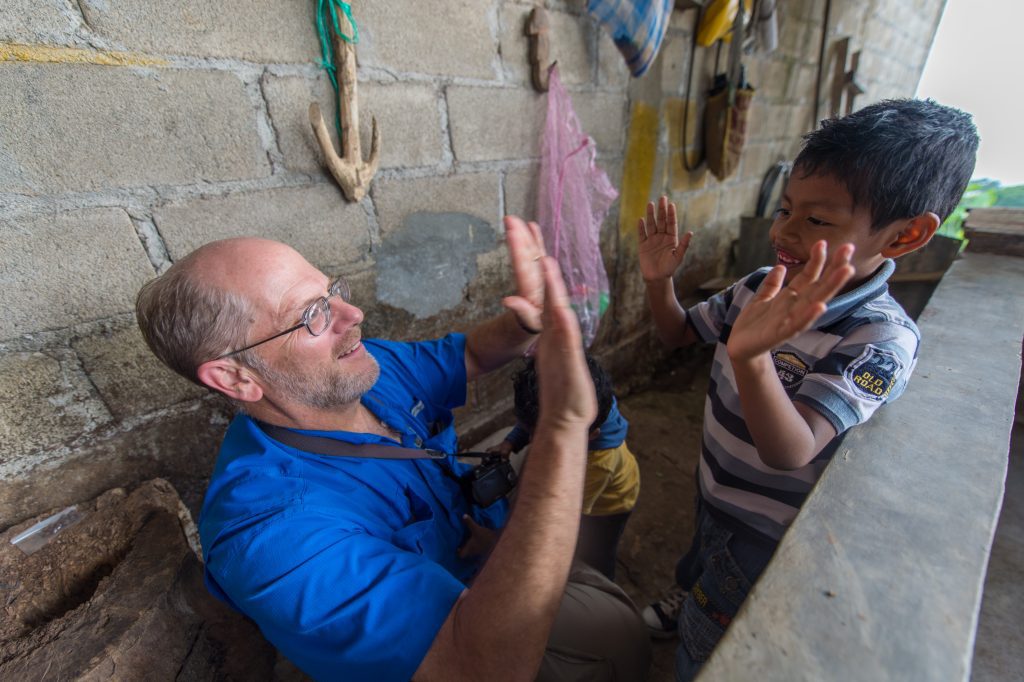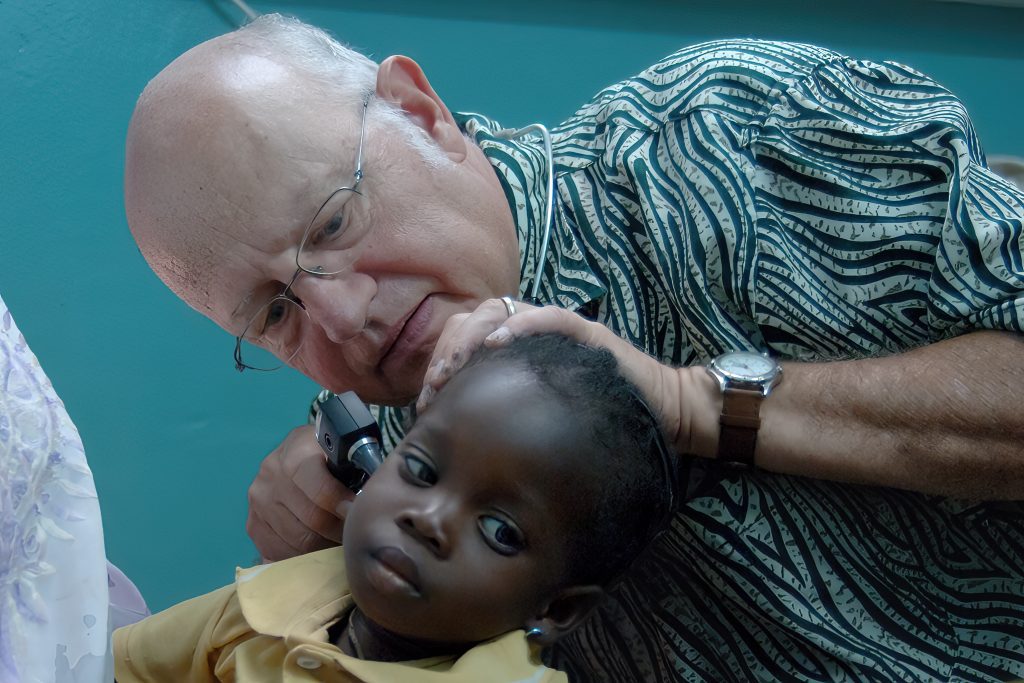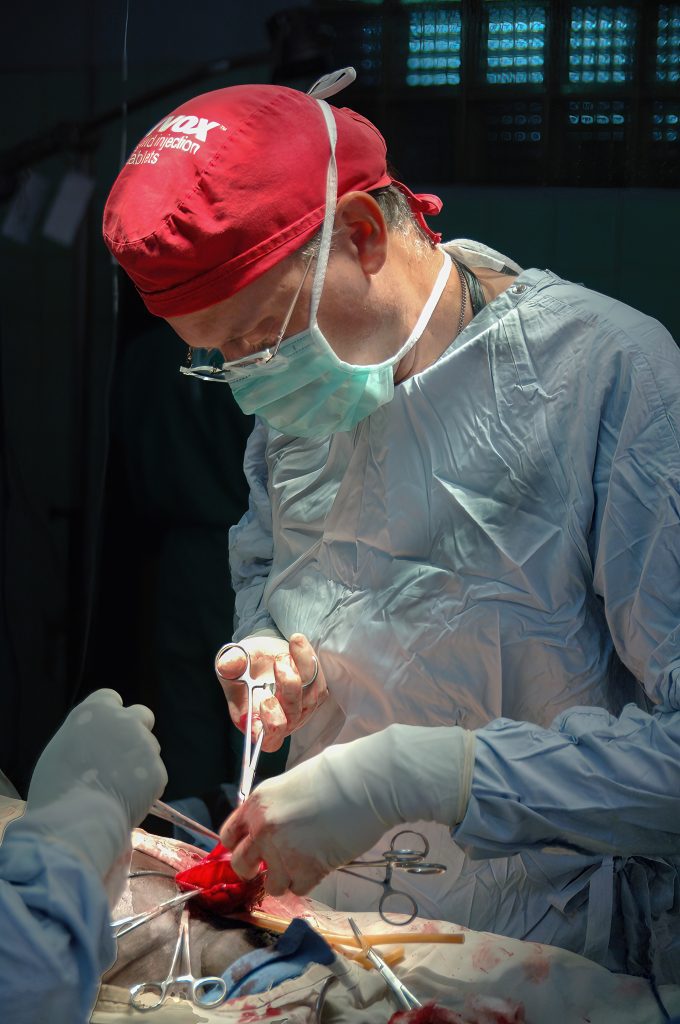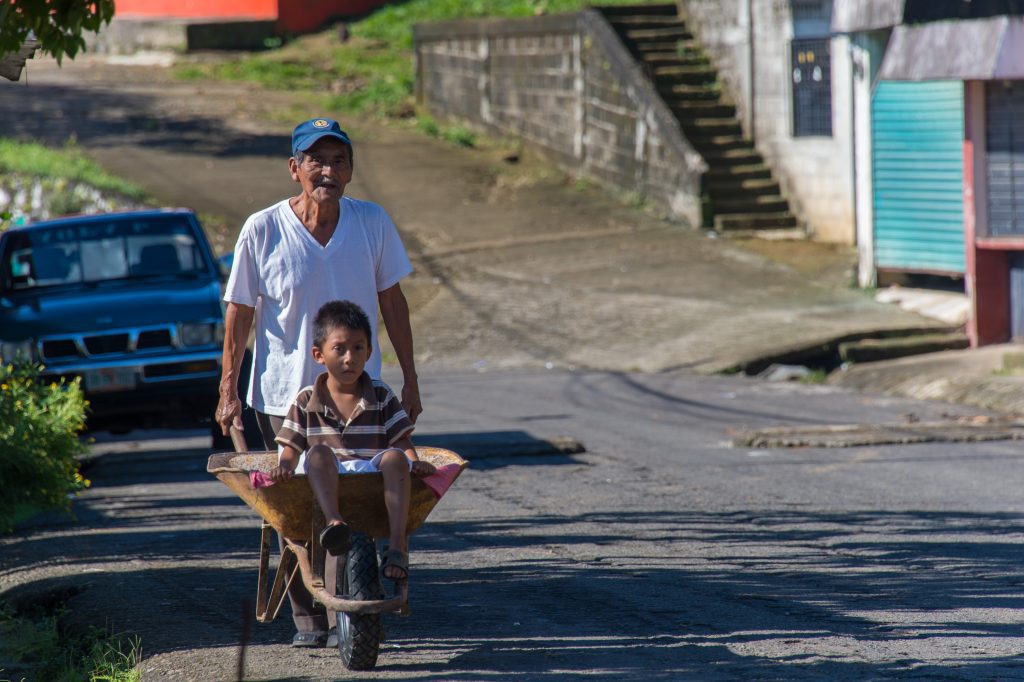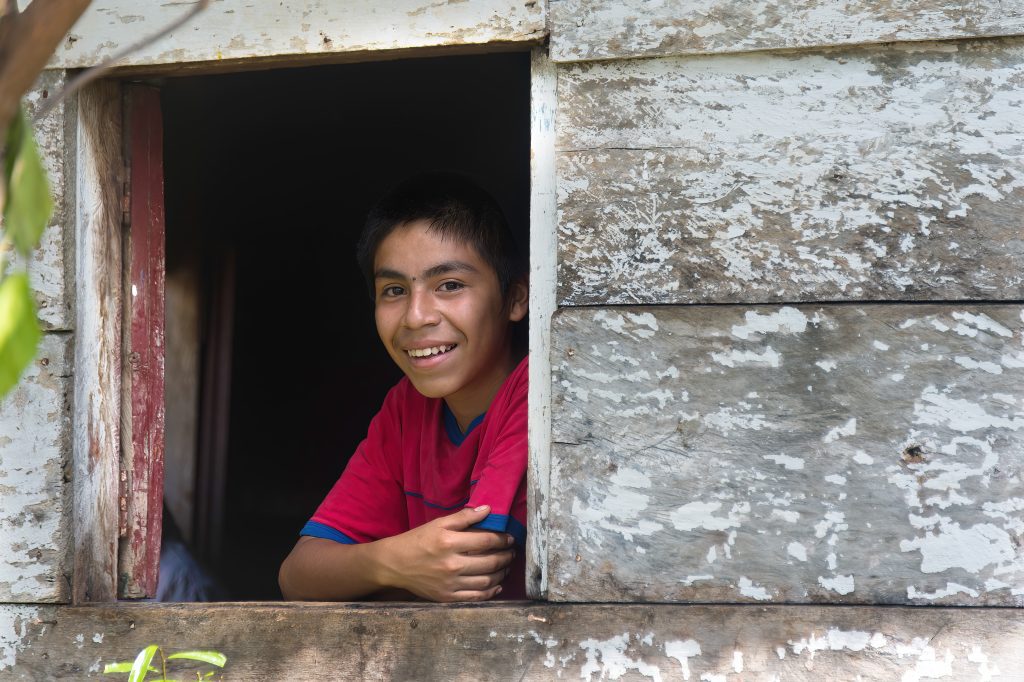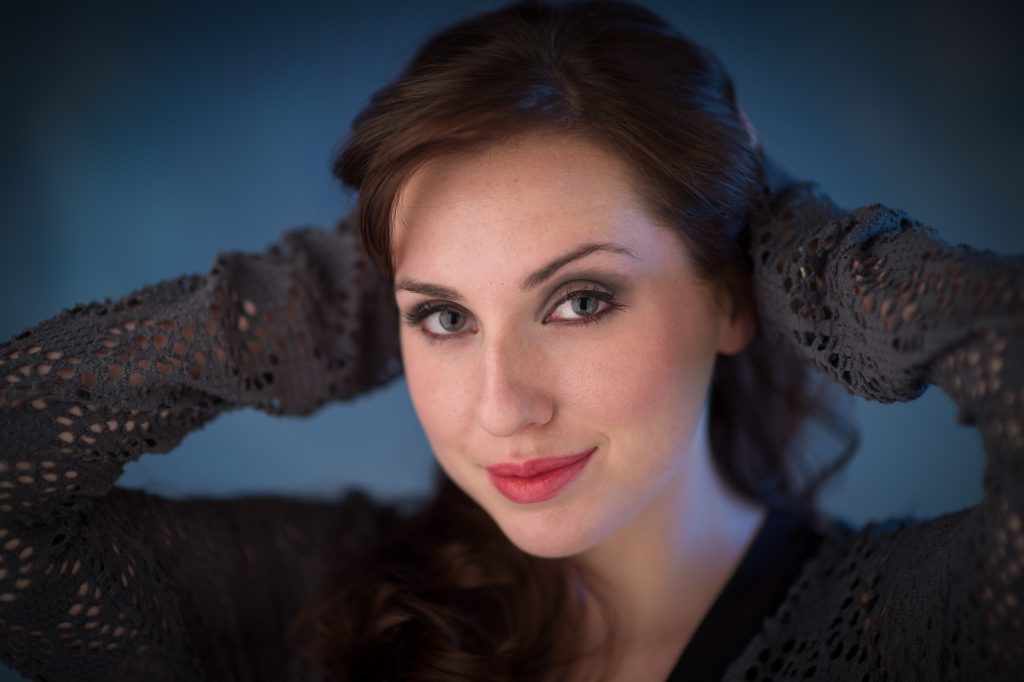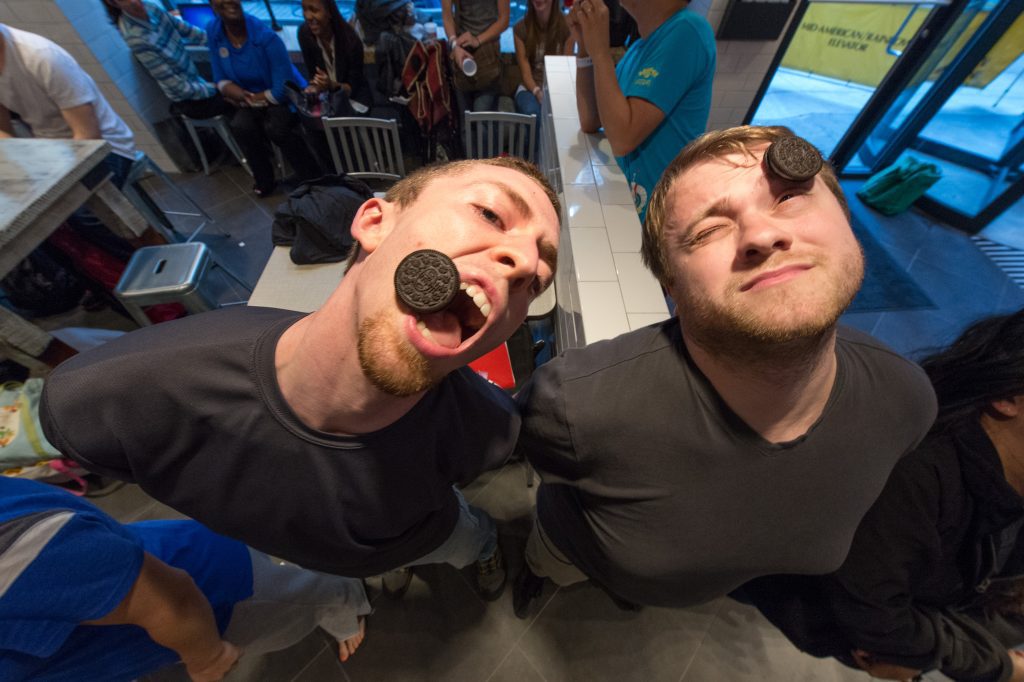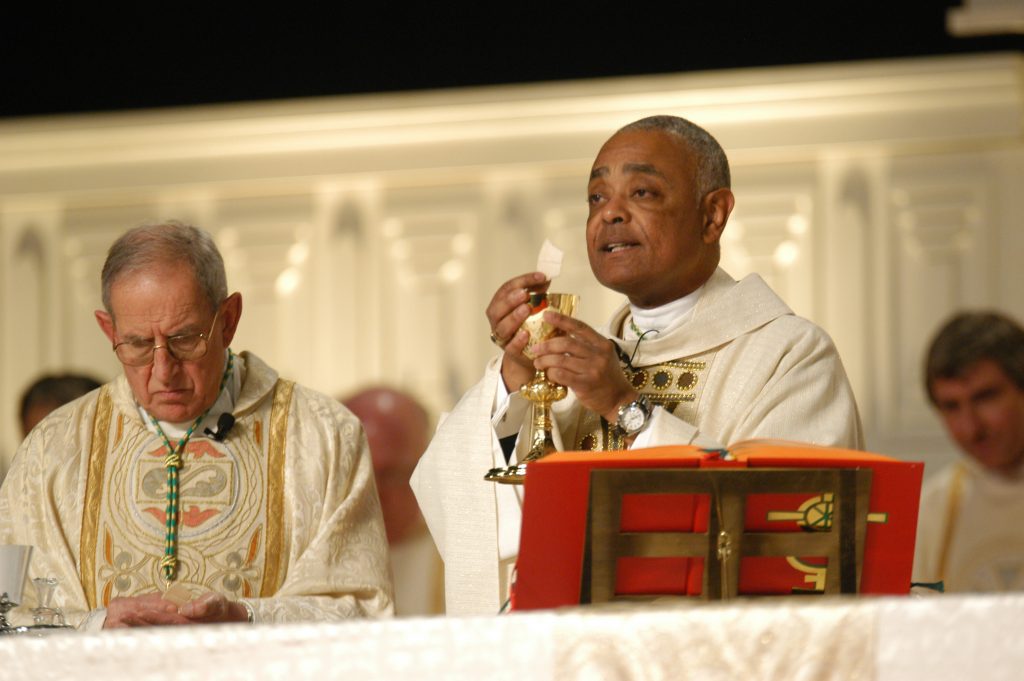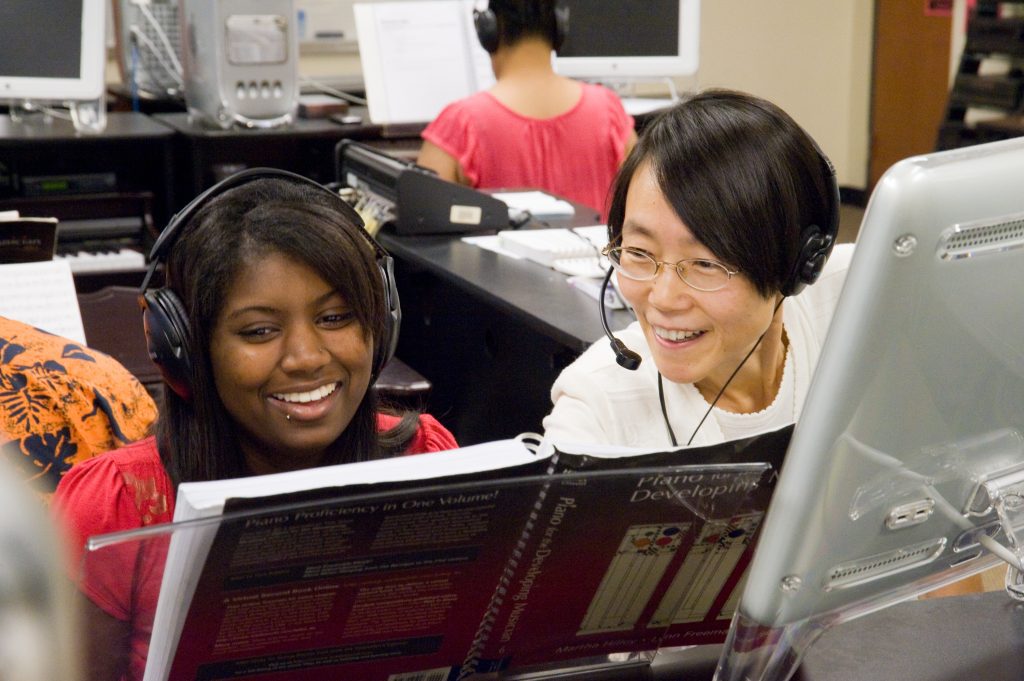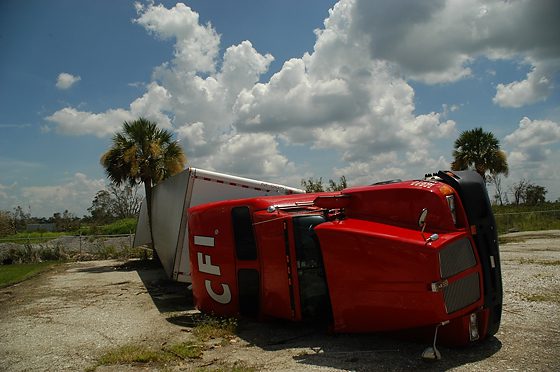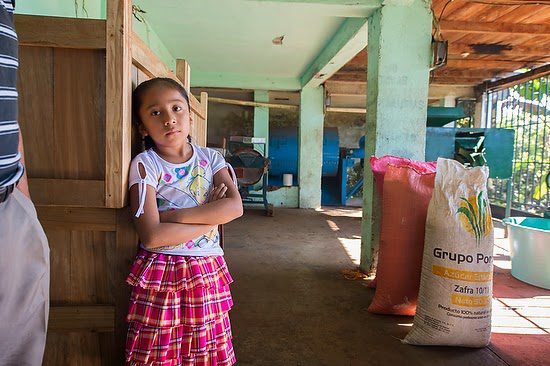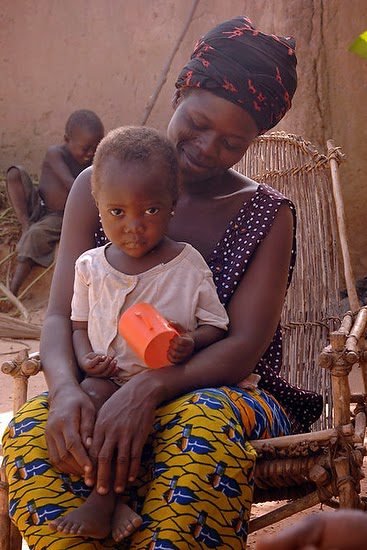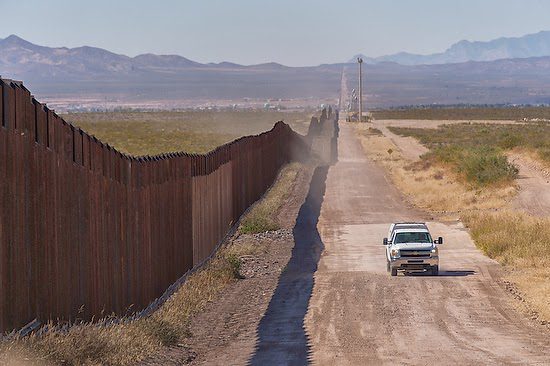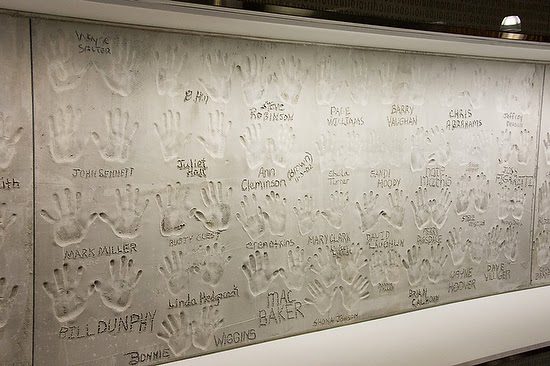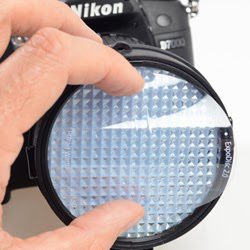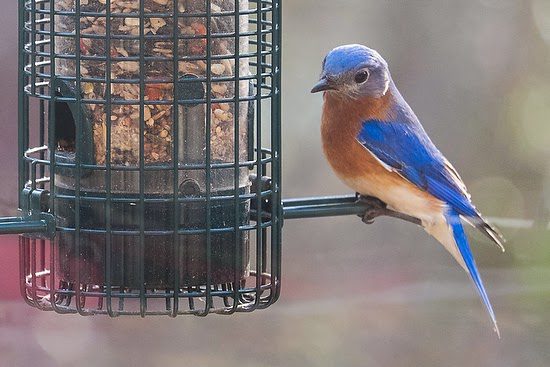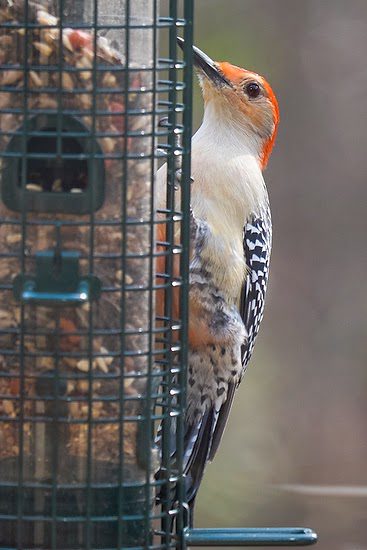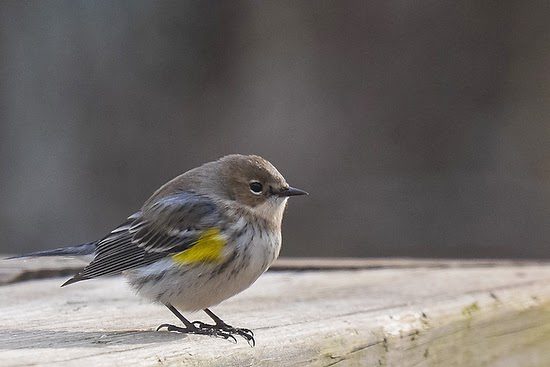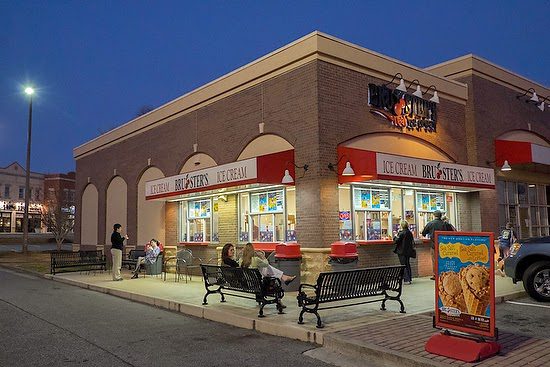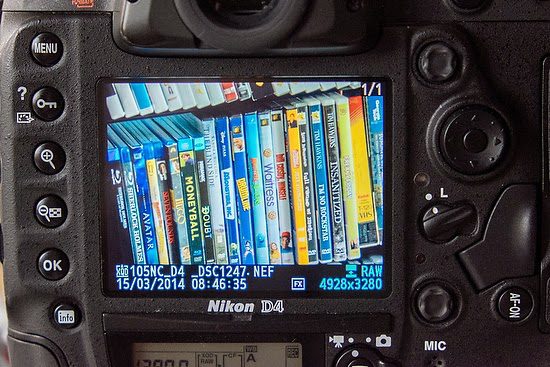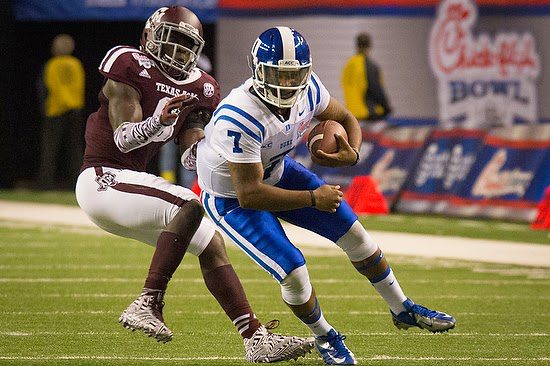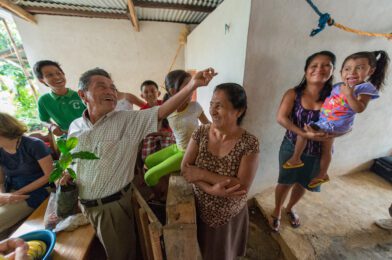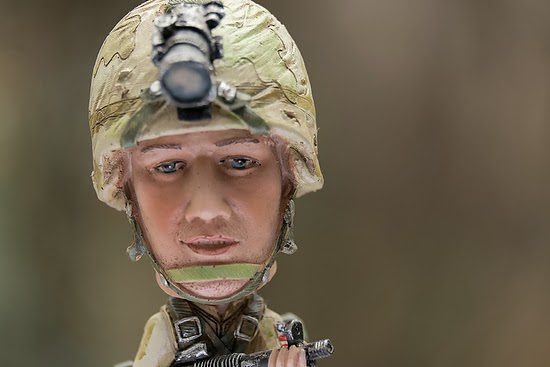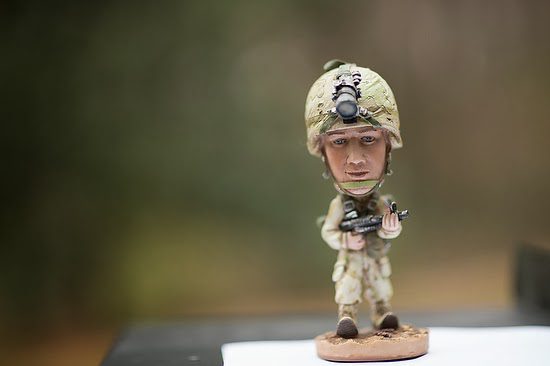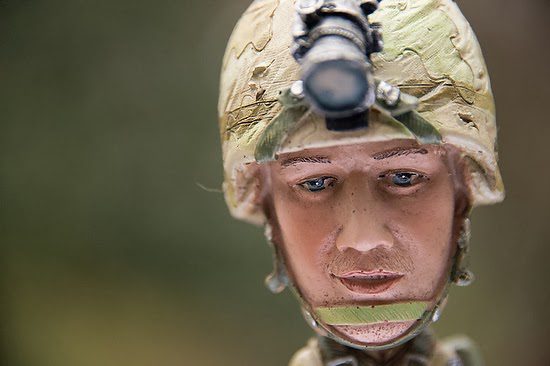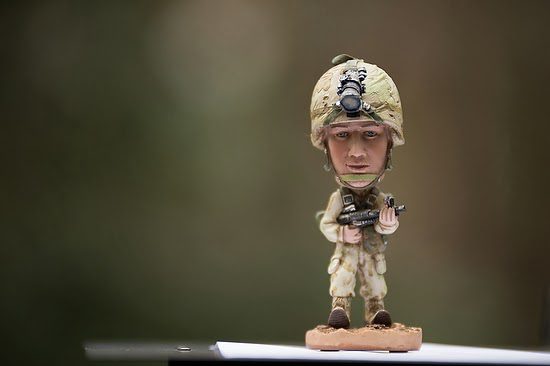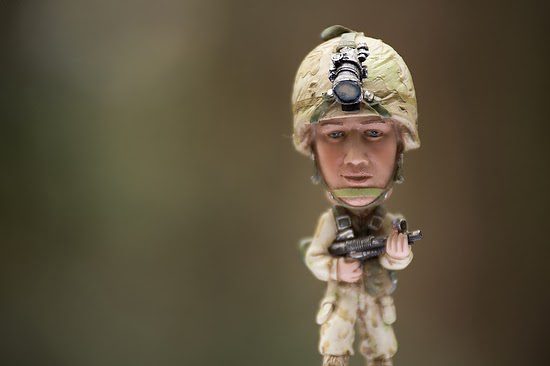Assessment
I walked into the room and a wall with handprints along one side. The wall has lights on it and is the brightest spot in the room.
The problem, as seen in the first photo, was the speakers’ background. They might have been standing in front of a window with sunlight coming in. There were no lights on the speakers except for the room lights, which were much darker than the wall.
The first thing I do in any situation—looks around and see where the light is and isn’t. I then pay attention to the type of light in the room.
I am assessing the direction and the quality of the light in the room.
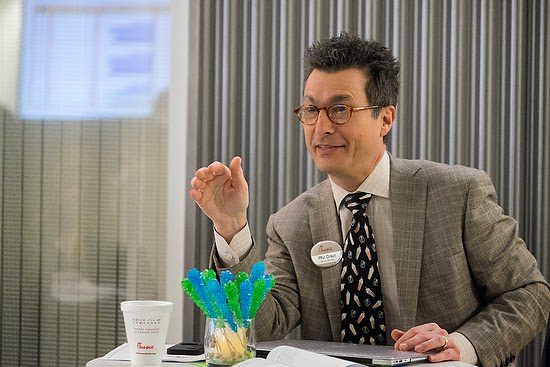 |
| Fujifilm X-E2, XF 55-200mm, ISO 6400, ƒ/4.4, 1/70 |
As long as I wasn’t photographing the speakers, the rest of the room didn’t present the same issues as the backlit speakers.
Custom white balance
To get the best possible color in photos, I rely first on ExpoDisc. I bought the original version in the 77mm size. I hold this in front of the lens to set the white balance.
In the new version, you can get filters that you put over the ExpoDisc, which let you warm up or cool down your color temperature.
If you use a slightly blue filter, your camera will add the opposite color, yellow, to try and color correct the image. This process will warm up your photos.
If you use a slightly yellow filter, the camera will add blue, making your photos cooler.
Since the ExpoDisc is going over the lens and capturing the light as it hits the filter, this gives you an incident light reading.
A general rule is an incident light reading is more accurate than a reflective reading. It is better because it just reads what the amount of light is hitting or the color of the light.
The camera set the Kelvin to 3650 and added 30+ magenta for my photos.
Since I was under fluorescent/sodium vapor type of lights, I had to use a shutter speed slower than 1/100 to avoid color banding in the photo.
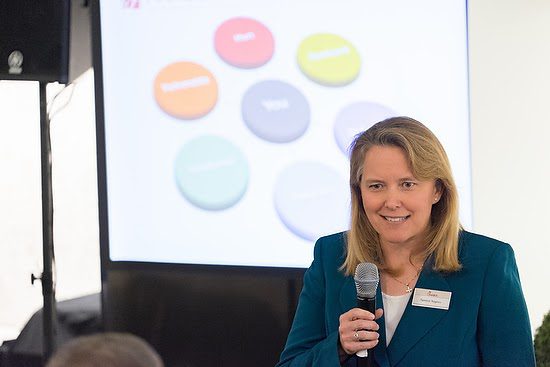 |
| Fujifilm X-E2, XF 55-200mm, ISO 6400, ƒ/4.6, 1/70 |
Exposure Value Adjustment
I shot the photos using the aperture priority mode on the Fujifilm X-E2. First, I picked the A for the shutter speed and then shot wide open with the aperture. I am using the MULTI metering mode for the Fujifilm X-E2.
I had the camera set to use AUTO ISO. On the camera, I set the low-end ISO to ISO 100 and the high-end ISO 6400. I put the shutter speed to 1/100 since I didn’t want to go above this due to the fluorescent/sodium vapor lights.
I am using the electronic viewfinder (EVF) while shooting. The EVF gave me a significant advantage over my DSRL because I saw what I would get later. The minute I put the camera on the speaker, all that backlight was silhouetting my speaker.
To get the correct exposure on the speaker, I adjusted the EV dial by +2.7, which is what you see above.
 |
| Fujifilm X-E2, XF 55-200mm, ISO 6400, ƒ/4.8, 1/50 [focal length 200mm & 35mm equivalent 300mm] |
I am handholding the Fujifilm X-E2 with the XF 55-200mm. This speaker photo’s lens is equivalent to a 300mm lens on my full-frame DSLR. So shooting at 1/50 shouldn’t be this sharp. The reason is the lens has optical image stabilization (OIS). The image stabilization function allows the use of shutter speeds 4.5 stops slower. As you can see, the photo looks pretty sharp for 1/50.
OIS cannot help you if the subject moves a lot while you are taking the photo. It just helps keep your camera steady.
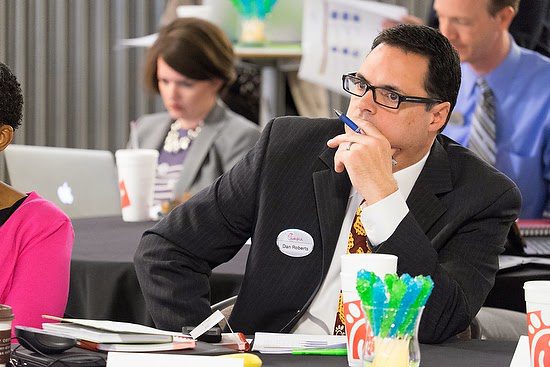 |
| Fujifilm X-E2, XF 55-200mm, ISO 6400, ƒ/4.7, 1/30 [RAW image processed through Adobe Lightroom] |
 |
| Fujifilm X-E2, XF 55-200mm, ISO 6400, ƒ/4.7, 1/30 [JPEG from camera no Adobe Lightroom] |
Why not ISO 12800 or 24600?
Frankly, I am not thrilled with how the Fujifilm X-E2 handles skin tones. They tend to come out just a little waxy for my taste. Also, to use an ISO greater than ISO 6400 on the Fujifilm cameras, you must shoot JPEGs, not RAW.
If the photos were not working, I would have shot at a higher ISO and lived with the trade of the waxy skin tones versus not-so-sharp images.
 |
| Fujifilm X-E2, XF 55-200mm, ISO 6400, ƒ/4.8, 1/75 |
For Comparison
 |
| Nikon D4, 28-300mm. ISO 12800, ƒ/5.6, 1/125 |
The one thing I still like about the Nikon D4 over the Fujifilm X-E2 is shooting raw at even higher ISO settings. As a result, the photo above is in available light like the Fuji, and the lens also has image stabilization to help with camera motion.
How about strobes?
 |
| Nikon D4, 28-300mm. ISO 6400, ƒ/5.6, 1/200 [2 Alienbees B1600 lights bounced on 1/32 power] |
I also shot photos using two Alienbees B1600 lights with Pocketwizard Plus II on the lights receiving the radio signal from the Pocketwizard MiniTT1 Transmitter on the Nikon D4.
The flashes helped a great deal with the quality of the image, but at what sacrifice? They announced to everyone in the room when I was taking a photo. It made the people too aware and less relaxed.
No question that you get better quality light with strobes, but unless you are dealing with professional actors/actresses, you will not get the best expressions during a meeting. Sure, you will get some, but I believe available light is the way to go—if possible.
 |
| Nikon D4, 28-300mm. ISO 6400, ƒ/5.6, 1/200 [2 Alienbees B1600 lights bounced on 1/32 power] |
Here are a couple more photos for you
 |
| Fujifilm X-E2, XF 55-200mm, ISO 6400, ƒ/4.6, 1/110 |
 |
| Nikon D4, 28-300mm. ISO 6400, ƒ/5.6, 1/160 [2 Alienbees B1600 lights bounced on 1/32 power] |
Hair bit more excellent color with the flashes, but if I am getting the photo with the Fujifilm X-E2 that looks this good without flash, why use flash?

